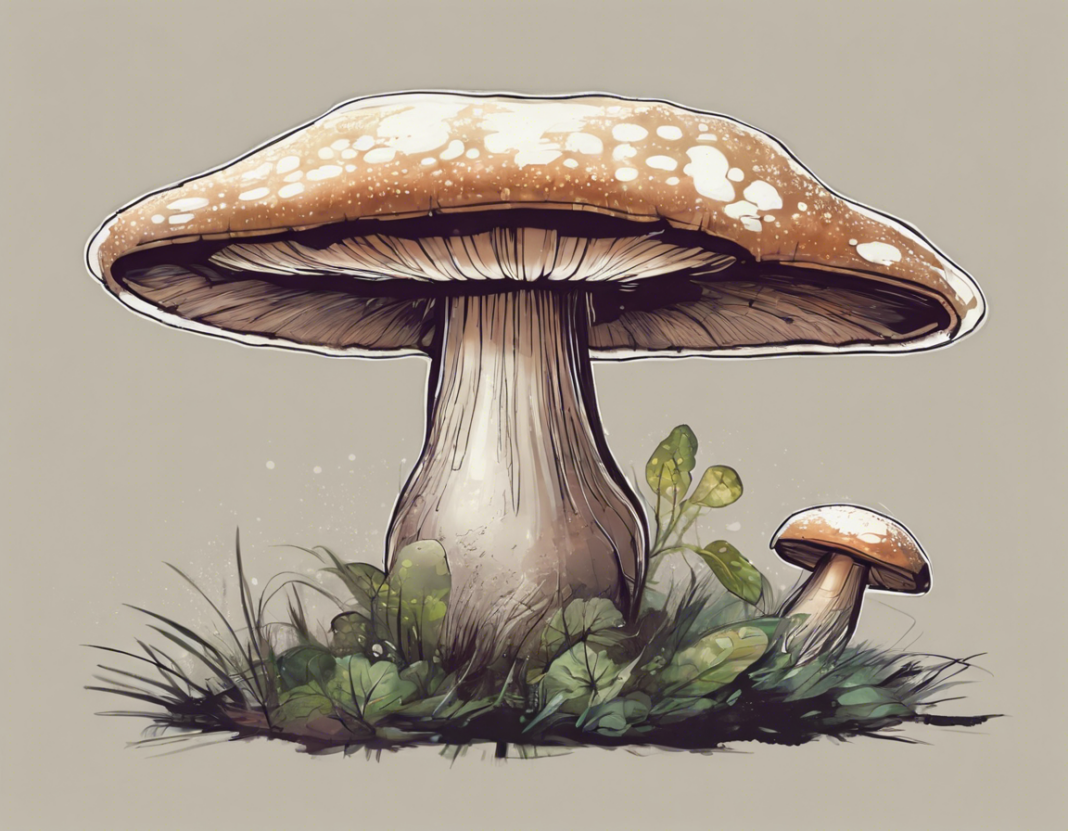Introduction
Welcome to the intriguing and captivating world of the Ape Mushroom, a unique and highly sought-after species that has been garnering attention in the realms of mycology and culinary arts. Also known as Psilocybe cubensis var. albino A+’, this distinctive strain of mushroom has been gaining popularity for its properties and characteristics that set it apart from other types of mushrooms. In this article, we will delve deep into the diverse aspects of the Ape Mushroom, from its origins and growth patterns to its effects and potential benefits.
Origins and History
The Ape Mushroom belongs to the Psilocybe cubensis genus, which comprises various species of psychedelic mushrooms. The specific strain known as Ape Mushroom is derived from the albino A+ variety of Psilocybe cubensis, characterized by its unique appearance and potency. The origins of the Ape Mushroom can be traced back to its discovery and cultivation by mycologists and enthusiasts who sought to create a strain that exhibited specific traits and effects.
The cultivation of the Ape Mushroom strain involves meticulous attention to detail and specialized techniques to ensure optimal growth and development. Its albino phenotype, which manifests as a lack of pigment in the mushroom’s cap and stem, distinguishes it from other varieties of Psilocybe cubensis. This unique trait contributes to its visual appeal and allure, making it a popular choice among enthusiasts and collectors.
Growth Patterns and Cultivation
The Ape Mushroom thrives in controlled environments that mimic its natural habitat and provide the ideal conditions for its growth. Cultivation of the Ape Mushroom typically involves the use of substrates such as vermiculite and brown rice flour, which serve as nutrient-rich mediums for the mycelium to colonize and form mushrooms. The colonization process is facilitated by maintaining optimal temperature, humidity, and aeration levels to support healthy growth.
As the Ape Mushroom develops, it goes through various stages of growth, starting from the inoculation of the substrate with spores to the formation of primordia, which eventually grow into mature mushrooms. The cultivation process requires patience and precision, as any deviations in environmental conditions can impact the growth and yield of the mushrooms.
Characteristics and Effects
One of the defining characteristics of the Ape Mushroom is its potency, which is attributed to its unique genetic makeup and composition of psychoactive compounds. The Ape Mushroom is known for its strong and intense effects, which can induce profound psychedelic experiences characterized by altered perceptions, enhanced sensory awareness, and introspective reflections.
The psychoactive compounds present in the Ape Mushroom, such as psilocybin and psilocin, interact with the brain’s serotonin receptors, leading to euphoric and hallucinogenic effects. These effects vary in intensity depending on factors such as dosage, individual sensitivity, and set and setting. Many users of the Ape Mushroom report heightened creativity, spiritual insights, and emotional catharsis during their psychedelic journeys.
Potential Benefits and Applications
Beyond its recreational use, the Ape Mushroom has garnered interest for its potential therapeutic and medicinal applications. Research has shown that psilocybin, the primary psychoactive compound in Ape Mushrooms, has promising results in the treatment of various mental health conditions, such as depression, anxiety, and PTSD. The neuroplastic effects of psilocybin have been linked to enhanced mood and cognitive function, making it a subject of ongoing studies and clinical trials.
Additionally, the Ape Mushroom has been explored for its potential in enhancing creativity, problem-solving, and personal growth. Many artists, writers, and thinkers have reported inspirational and transformative experiences with the Ape Mushroom, attributing their creative breakthroughs and insights to its psychedelic effects.
FAQs (Frequently Asked Questions)
- How do you differentiate Ape Mushrooms from other mushroom strains?
-
Ape Mushrooms are distinguished by their albino phenotype, characterized by a lack of pigment in the cap and stem.
-
Are Ape Mushrooms legal to cultivate and consume?
-
The legal status of Ape Mushrooms varies by region, so it is essential to check local regulations before cultivation or consumption.
-
What are the optimal growing conditions for Ape Mushrooms?
-
Ape Mushrooms thrive in controlled environments with consistent temperature, humidity, and aeration levels.
-
What are the potential risks associated with consuming Ape Mushrooms?
-
Consumption of Ape Mushrooms can lead to hallucinogenic effects and altered perceptions, which may be intense for some individuals.
-
How can Ape Mushrooms be used for therapeutic purposes?
-
Ape Mushrooms containing psilocybin are being studied for their potential in treating mental health conditions such as depression and anxiety.
-
Are there any precautions to consider before consuming Ape Mushrooms?
-
It is advisable to start with a low dose and ensure a safe and supportive environment when consuming Ape Mushrooms.
-
What is the shelf life of dried Ape Mushrooms?
-
Properly dried Ape Mushrooms can be stored for an extended period, retaining their potency and quality.
-
Can Ape Mushrooms be incorporated into culinary dishes?
-
Ape Mushrooms can be used in various culinary preparations, such as teas, smoothies, and chocolates, to mask their earthy flavor.
-
Are there any guidelines for responsible consumption of Ape Mushrooms?
-
Practicing moderation, being mindful of dosage, and ensuring a positive mindset are essential for a safe and enjoyable psychedelic experience.
-
How can one acquire Ape Mushrooms for cultivation or consumption?
- Ape Mushrooms spores and grow kits can be obtained from reputable suppliers and vendors specializing in mycology products.
Conclusion
In conclusion, the Ape Mushroom stands out as a remarkable and intriguing species that continues to captivate enthusiasts and researchers alike. From its unique characteristics and potent effects to its therapeutic potential and creative applications, the Ape Mushroom offers a multifaceted and enriching experience for those who seek to explore its wonders. As our understanding of this fascinating mushroom deepens, it opens doors to new possibilities and insights into the realms of mycology, psychology, and beyond. Embrace the journey into the enigmatic world of the Ape Mushroom and let its transformative powers guide you on a path of discovery and illumination.
